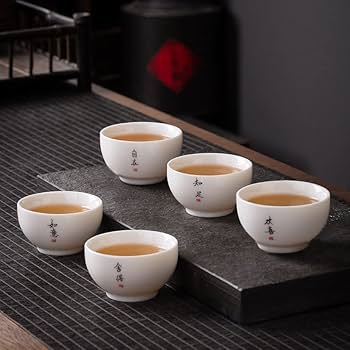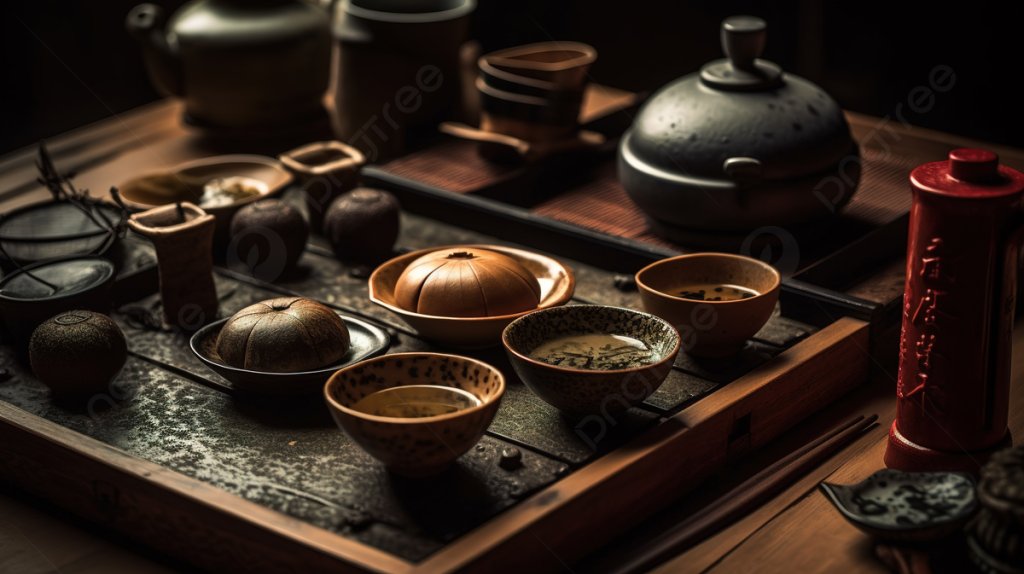Teaware: The Soul of Chinese Tea Culture
When people think about tea, they often focus on the dried leaves, their origin, type and flavour. However, in Chinese tea tradition, teaware is also as important as tea itself. Teaware is the tools that use to brew and serve tea. Other than that, teaware is not just functional, they embody history, art and philosophy.Whether steeping a delicate Oolong or sharing aged Pu-erh with friends, the right teaware elevates the experience from ordinary to extraordinary. Keep follow up to our blog, we’ll explore the fantasy history of teaware, and how each piece enhance the ritual of tea. The Evolution of Chinese Teaware: A Journey Through Time Chinese teaware has evolved alongside tea itself, reflecting changes in preparation methods and cultural values. 618 AD Tang Dynasty618 – 907 AD Tang Dynasty Tea was pressed into cakes and boiled in earthenware pots. SongDynasty960 – 1279 AD Song Dynasty Powdered tea (matcha-style) was whisked in ceramic bowls, inspiring Japan’s famous matcha tradition. Ming Dynasty1368 – 1644 AD Ming Dynasty Loose-leaf tea gained popularity, leading to the invention of smaller brewing vessels like the Yixing teapot and gaiwan. Qing Dynasty1644 – 1912 AD Qing Dynasty Teaware become more refined, with intricate porcelain designs and specialized tools for gongfu tea ceremonies. Essential Chinese Teaware & Their Roles Yixing Teapots (紫砂壶) – The Masterpiece of Clay Origin : Handcrafted in Yixing, Jiangsu, from purple clay (zisha). Why It’s Special : The porous clay absorbs tea oils, enhancing flavour over time. Best for oolong , pu-erh and black tea. Pro Tip : Dedicate one Yixing pot per tea type to preserve its unique flavour memory. Gaiwan (盖碗) – The Universal Brewer Design : A lidded bowl with a sauser, usually made of porcelain. Best For : Green, white and floral tea. Reason of it is because it is ideal for controlling infusion strength. Why Use It? : Allows full leaf expansion and aroma appreciation. Tea Pitcher (公道杯) – The Equalizer Purpose : Ensures every cup has the same strength by decanting tea before serving. Material : Often glass or ceramic, allowing visual appreciation of the liquor. Tea Cups (品茗杯) – Small But Mighty Size Matters : Small cups (20 – 50 ml) encourage slow sipping and flavour focus. Materials : Porcelain : Neutral taste, great for delicate teas. Clay : Enhances richness, ideal for roasted oolongs and pu-erh tea. Glass : Perfect for observing tea color and clarity. Tea Tray (茶盘) – The Foundation of the Tea Space Function : Catches spills, drains water and displays teaware elegantly. Styles : Bamboo (lightweight), stone (durable), or carved wood (artistic). How Teaware Influences Tea Flavour Your choice of teaware significantly impacts taste, aroma and mouthfeel: Material Best For Effect On Tea Yixing Clay Oolong, Pu-erh, Black Tea Enhance depth, absorbs flavours over time Porcelain Green, White, Light Oolong Preserves pure, clean taste Glass Flowing teas, Herbal Blends Showcases visual beauty, neutral flavour Shape & Size : Smaller teapots (like Yixing) allow multiple short infusions, unlocking layered flavours. Heat Retention : Clay retains heat for fermented teas, while porcelain cools faster for delicate brews. Traditional VS Modern Teaware : Which is Right For You? Traditional Teaware Modern Teaware Yixing Teapots / Gaiwans / Clay Cups Infuser Mugs / Electric Kettles / Travel Sets Best for ritual, flavour depth Convenient for quick brewing Requires skill and care Easy to use and clean The Best of Both Worlds : Use traditional sets for mindful sessions and modern tools for on-the-go convenience. Teaware as Art : Beauty in Function Chinese teaware is morer than utility – it is a fusion of craftmanship and philosophy. Hand-Painted Porcelain : Often features nature motifs (bamboo, lotus, landscapes). Carved Clay Teapots : Some Yixing pots resemble fruits, animals or mythical symbols. Collectible Cups : Artisans create unique glazes and textures, turning teaware into heirlooms. Caring for Your Teaware : Tips for Longevity Yixing Teapots : Rinse with hot water only—never soap. Air dry after use. Porcelain & Gaiwans : Hand wash gently; avoid abrasive cleaners. Glass Teapots : Prevent thermal shock by pre-warming with hot water. Regular Use : The more you brew, the better your teaware performs. Final Thoughts: Teaware is Tea’s Soul In Chinese tea culture, every detail – from water temperature to pouring technique – matters. The right teaware transforms tea from a drink into an experience, connecting you to centuries of tradition. Ready to Elevate Your Tea Ritual? Explore our curated collection of authentic Yixing teapots, gaiwans, and handcrafted tea sets – each piece chosen for beauty, function, and heritage.
Teaware: The Soul of Chinese Tea Culture Read Post »

